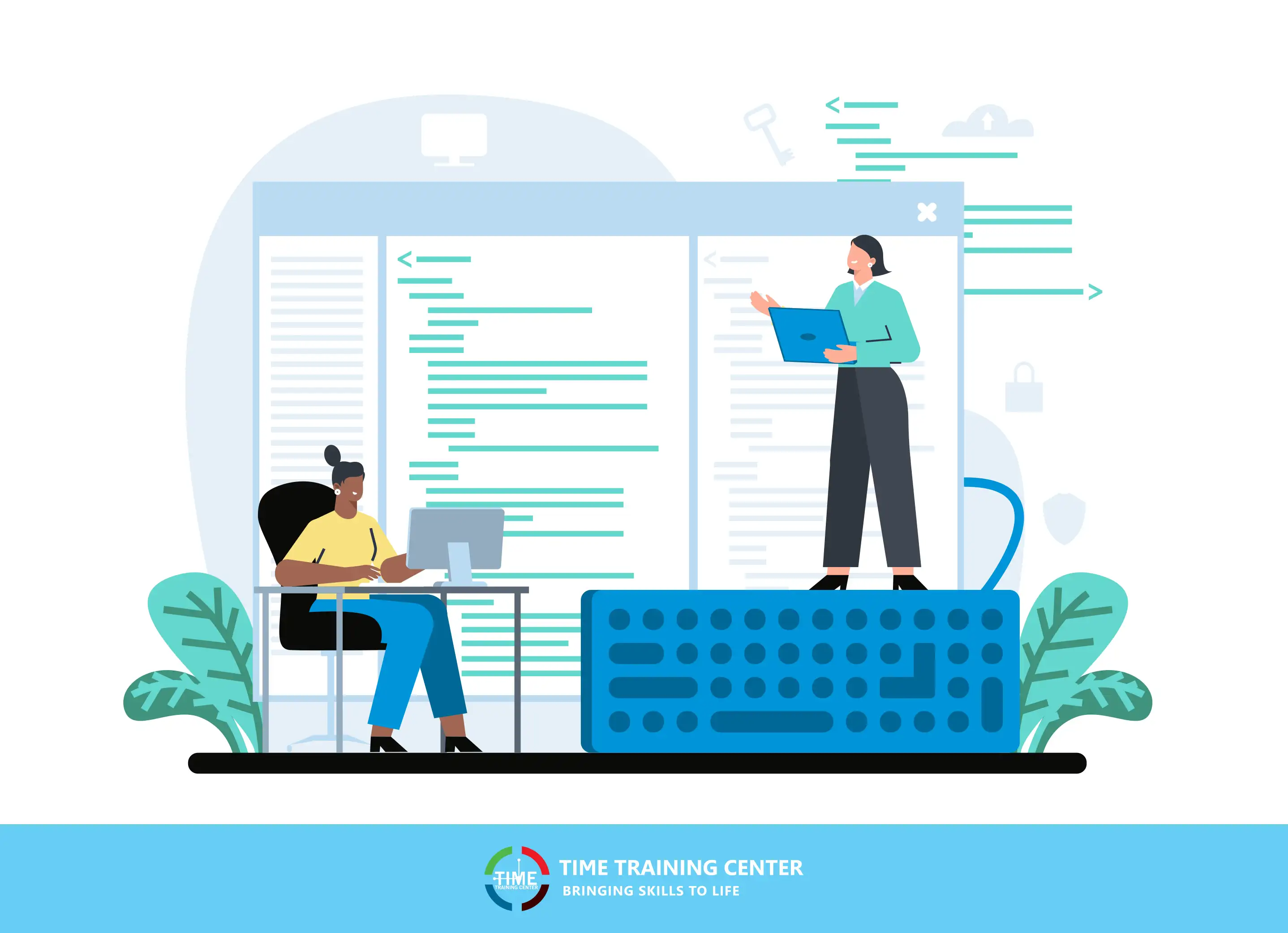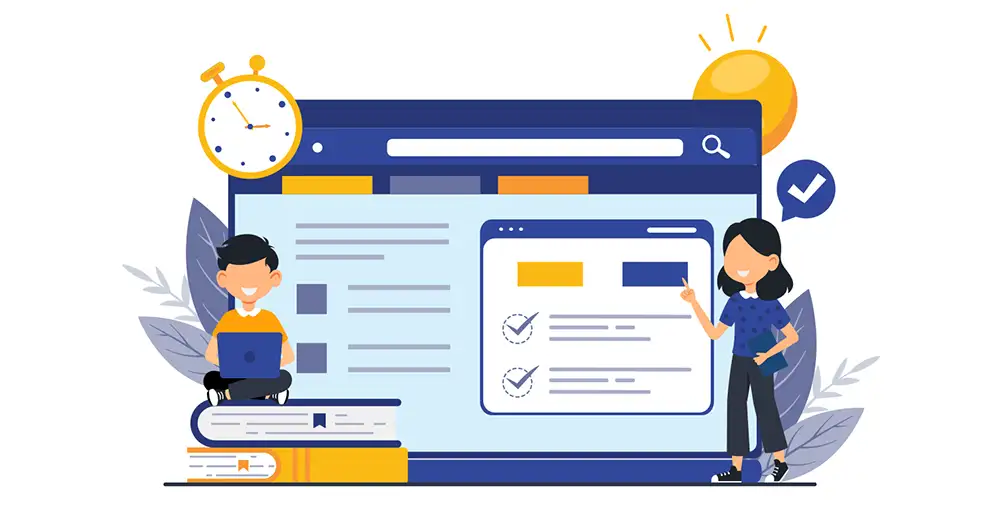Front-end programming languages are essential in website and application development because they provide the visual and interactive aspects that users view and engage with. These languages, including HTML, CSS, and JavaScript, provide the foundation of the user interface, controlling how the material is shown and how users interact with it. Choosing the correct front-end language is critical for developers since it affects the user experience, performance, and overall success of the project.
This blog will explore the top 10 front-end programming languages, dissecting their features and practical applications and offering insights to aid developers in informed decision-making for their projects.
Check out: Top Skills to Become a Full-Stack Developer
Top 10 Front-End Programming Languages
Front-end programming languages form the backbone of the digital world we interact with daily. From the structure of web pages to their styling and interactivity, these languages shape our online experiences. Here are the top 10 front-end programming languages;
-
HTML (Hypertext Markup Language)
-
CSS (Cascading Style Sheets)
-
JavaScript
-
TypeScript
-
CoffeeScript
-
Dart
-
Elm
-
WebAssembly (Wasm)
-
Haxe
-
XML (Extensible Markup Language)
1. HTML (Hypertext Markup Language)
HTML, the foundation of web development, structures content on the internet. Think of HTML as the skeleton of a webpage, defining headings, paragraphs, images, and links.
For instance, when you browse a news site, HTML organizes articles, headlines, images, and links, presenting them in a readable and structured format. Without HTML, web pages would lack coherence and structure, making navigation and content consumption challenging for users.
2. CSS (Cascading Style Sheets)
CSS brings life to HTML by styling and designing web pages. Imagine a fashion stylist dressing up a model, CSS dresses up HTML content with colors, fonts, layouts, and animations, enhancing its visual appeal.
When you visit a website with beautiful typography, vibrant colors, and seamless transitions, CSS is behind the scenes, making it visually appealing and captivating. Without CSS, web pages would appear bland and unattractive, lacking the visual flair that captures users' attention and enhances their browsing experience.
3. JavaScript
JavaScript adds interactivity and functionality to web pages, transforming static content into dynamic experiences. Picture a restaurant's website where you can view menus, make reservations, and interact with maps.
JavaScript enables these actions, making the website engaging and user-friendly. From simple tasks like form validation to complex functionalities like interactive games and real-time updates, JavaScript powers a wide array of web applications, enriching the user experience and making websites more interactive and responsive.
Also read: Why Should Choose to Learn Java Programming
4. TypeScript
TypeScript enhances JavaScript by adding static typing and other features for large-scale applications. Imagine developing a robust banking application where data integrity and security are paramount.
TypeScript ensures type consistency, reducing bugs and improving code maintainability. By catching errors during development, TypeScript boosts developer productivity and confidence, leading to more reliable software products that meet the stringent requirements of modern applications.
5. CoffeeScript
CoffeeScript is a language that compiles JavaScript, offering syntactic sugar and concise syntax. Think of CoffeeScript as a shorthand version of JavaScript, simplifying common tasks like array manipulation and function definitions.
For example, writing a complex algorithm in JavaScript might require several lines of code, while CoffeeScript accomplishes the same task with fewer lines, enhancing code readability and maintainability and allowing developers to write cleaner and more expressive code.
6. Dart
Dart is a client-optimized language for building fast web applications. Consider a social media platform like Twitter, where millions of tweets are posted and updated in real-time – Dart's performance optimizations ensure smooth scrolling and quick response times, enhancing the user experience and making web applications faster and more responsive.
By leveraging Dart, developers can create high-performance web applications that rival native experiences, pushing the boundaries of web development and delivering superior user experiences.
7. Elm
Elm is a functional programming language for building reliable web applications. Picture an online banking platform where accuracy and reliability are critical – Elm's immutable data structures and pure functions ensure predictable behavior, reducing the likelihood of bugs and errors and making web applications more stable and reliable.
With Elm, developers can create robust web applications that maintain stability even under heavy usage, instilling confidence in users and stakeholders and ensuring that web applications perform reliably under various conditions.
8. WebAssembly (Wasm)
WebAssembly is a binary instruction format that enables high-performance computation in web browsers. Imagine running complex calculations or simulations directly within a web page, such as rendering 3D graphics or processing large datasets.
WebAssembly unlocks these possibilities, pushing the boundaries of what web applications can achieve and enabling developers to create immersive and interactive web experiences that rival native applications.
9. Haxe
Haxe is a versatile language that compiles to multiple platforms, including web browsers. Consider developing a cross-platform mobile game that runs seamlessly on iOS, Android, and web browsers – Haxe's cross-compilation capabilities streamline the development process, reducing time-to-market and maintenance costs and enabling developers to reach a wider audience with their applications.
With Haxe, developers can write code once and deploy it across various platforms, maximizing the reach and accessibility of their applications and ensuring that their applications are accessible to users on different devices and platforms.
10. XML (Extensible Markup Language)
XML is a markup language that stores and transports data across different systems. Think of XML as a universal language for data exchange, similar to how shipping containers standardize goods for international trade. For example, web services commonly use XML to transmit structured data between servers and clients, facilitating seamless integration between disparate systems and ensuring that data is exchanged accurately and efficiently.
With XML, developers can ensure data consistency and interoperability, enabling smooth communication between applications and systems and ensuring that data is exchanged reliably and securely across different platforms and environments.
You might be interested: How to Learn Programming Language?
Conclusion
In conclusion, these top 10 front-end programming languages are crucial in shaping the digital landscape. From structuring content to enhancing visual appeal and enabling interactivity, each language contributes uniquely to the development of user-friendly and engaging web experiences. Understanding their features and applications empowers developers to create innovative solutions that meet the evolving demands of modern users.
You may also like: Best Languages for Web Development
 +971 2 6713828
+971 2 6713828



